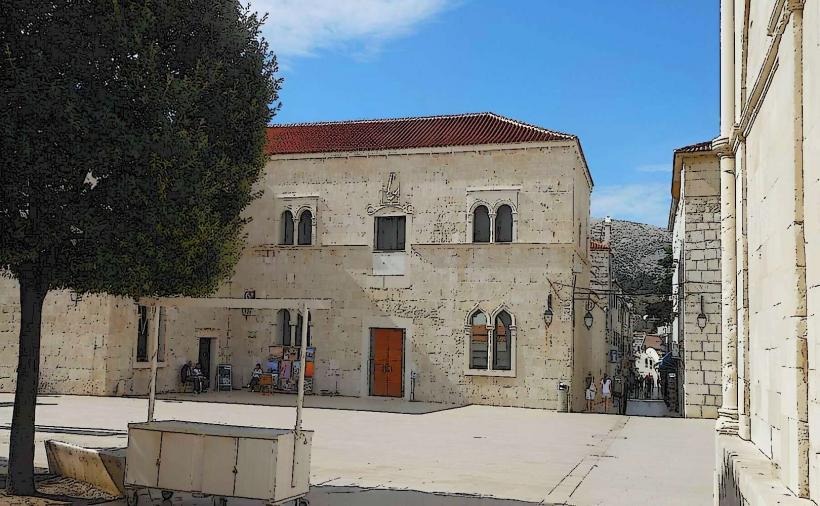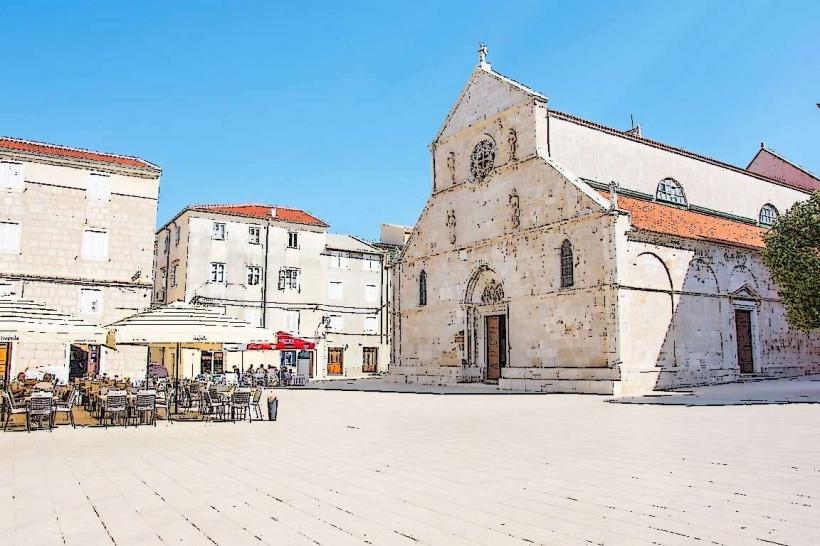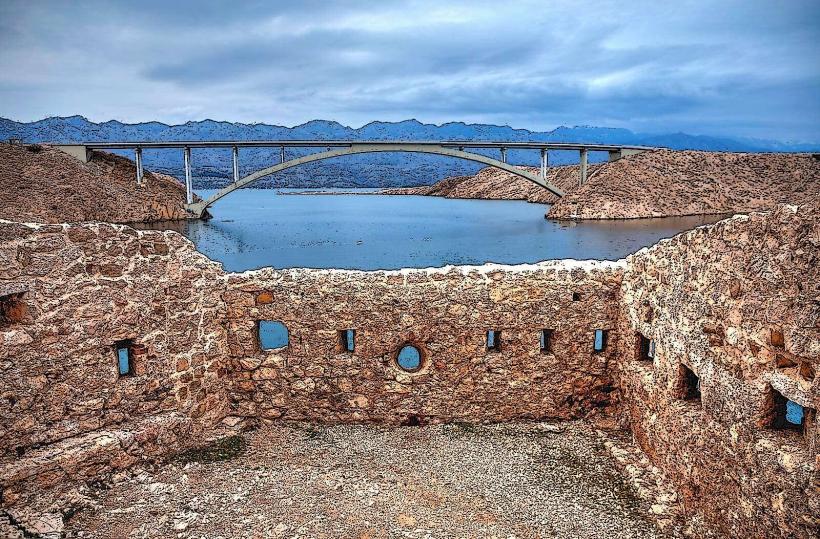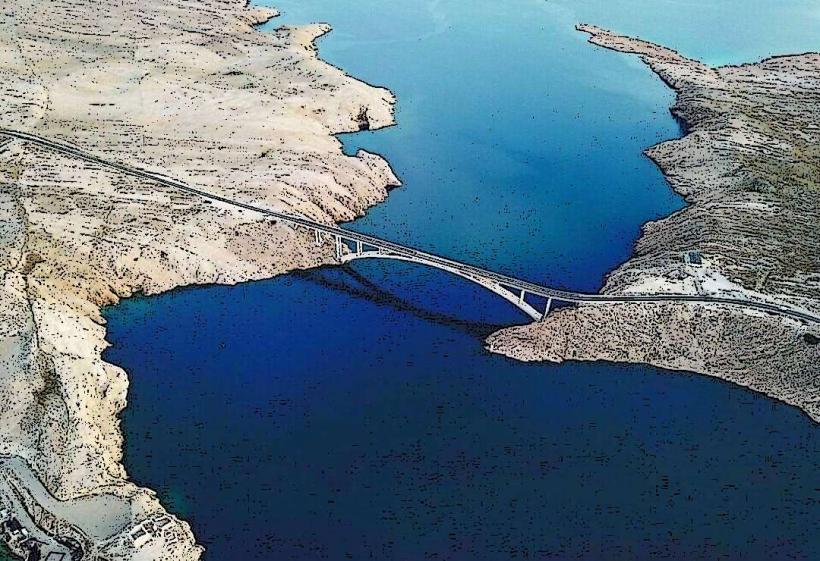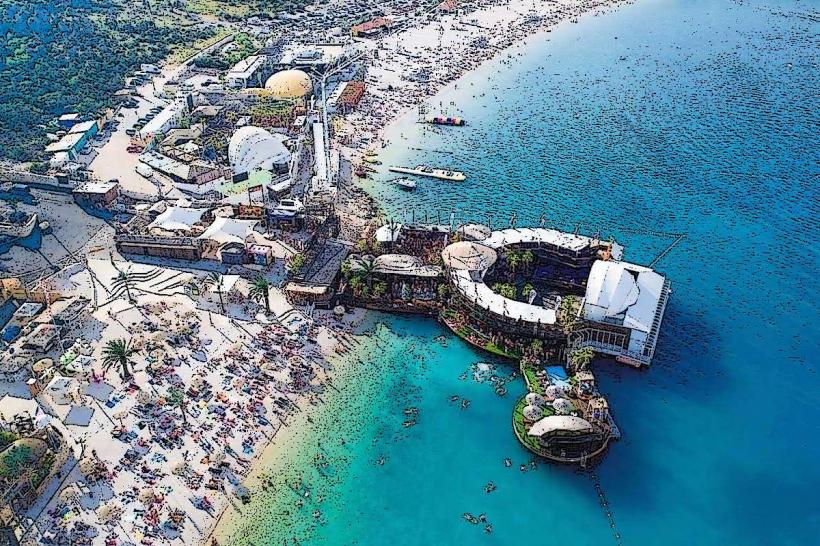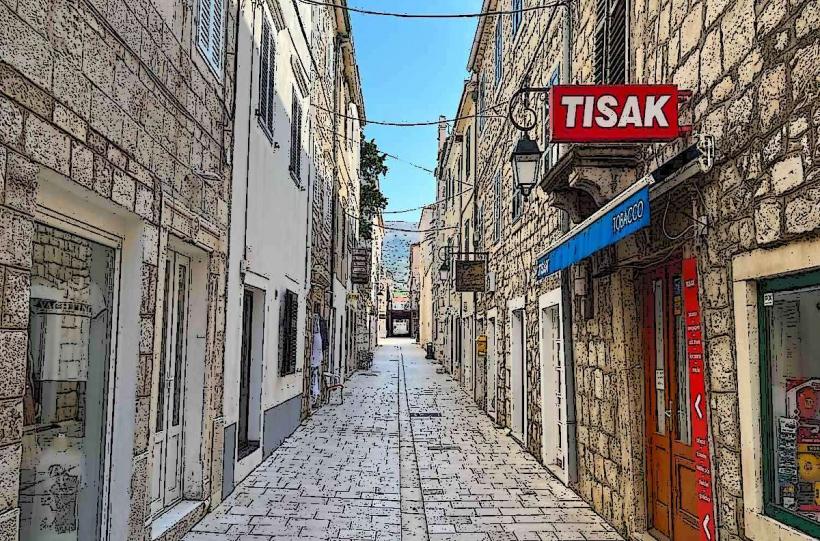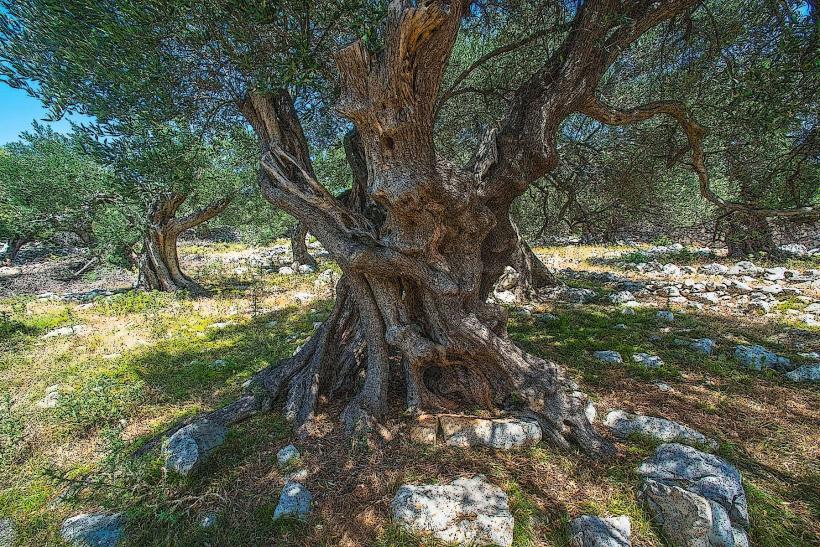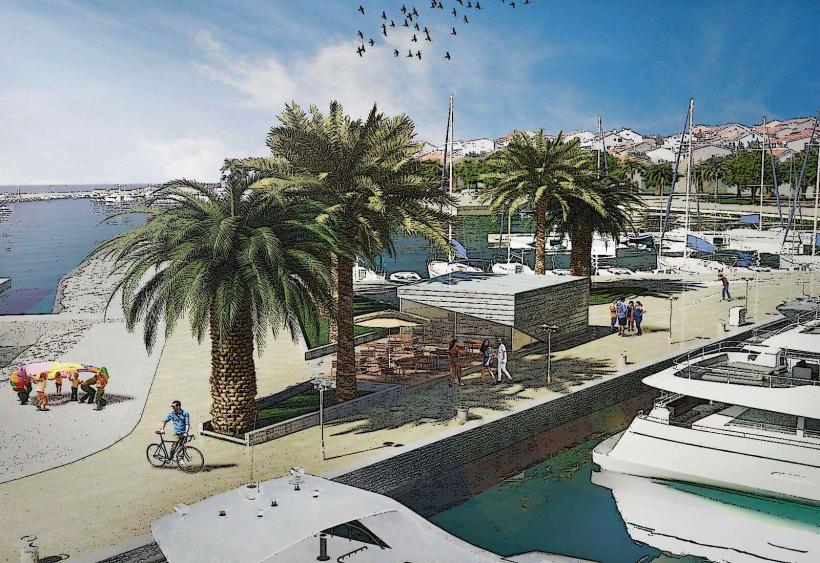Information
City: PagCountry: Croatia
Continent: Europe
Pag is a unique and fascinating island in the northern Adriatic Sea, part of Croatia’s coastal region. Known for its rugged landscapes, distinctive stone architecture, and cultural heritage, Pag offers a blend of natural beauty, historical significance, and traditional Croatian life. It is most famous for its salt production, traditional cheese, and vibrant summer tourism scene. Here’s a detailed exploration of the island of Pag:
Geography and Setting
- Island Location: Pag is located in the northern part of the Adriatic, off the coast of Croatia, and is the fifth-largest island in the country. It is connected to the mainland by a bridge from the town of Pag and can also be reached by ferry from the nearby islands of Rab and Mali Lošinj.
- Landscape: The island’s landscape is starkly different from many of Croatia's more fertile coastal areas. Its rocky, barren surface is often likened to a lunar landscape, with sparse vegetation and limestone hills. The northern part of the island is covered with rocky hills and cliffs, while the southern part is greener and more cultivated, with olive groves and vineyards.
- Beaches and Coastline: Pag has a long, rugged coastline dotted with both pebbly and sandy beaches, including the famous Zrće Beach, a hotspot for tourists and partygoers. The island's coastline is interspersed with numerous coves, some accessible only by boat.
City Layout and Neighborhoods
- Pag Town: The main settlement on the island, Pag Town (also known as Grad Pag), is located on the southeastern coast. The town is known for its distinctive lace, salt production, and medieval architecture. Pag Town features narrow streets, stone houses, and beautiful Venetian-era architecture, particularly the Church of St. Mary and the impressive Pag Town Square.
- Novalja: Another popular town on the island, located in the northwestern part of Pag. Novalja is known for its tourism and lively nightlife, especially at Zrće Beach, which has earned the area a reputation as the "Croatian Ibiza" for its beach clubs and music festivals.
- Stara Novalja: A quieter, more relaxed area located near Novalja, Stara Novalja is ideal for visitors seeking a peaceful retreat with access to beautiful beaches.
- Villas and Seaside Resorts: Many visitors to Pag opt for private villas or seaside resorts that provide stunning views of the Adriatic and are often tucked away in more secluded parts of the island.
Cultural Atmosphere
- Historical Significance: Pag has a long history dating back to Roman times. The island was originally settled by the Greeks in the 4th century BC and later became part of the Roman Empire. Its strategic position made it an important point for trade and defense during the Middle Ages, particularly under Venetian rule.
- Salt Production: Pag’s historical salt production is one of the island’s defining features. The island has been a center for salt extraction for centuries, and the famous Pag salt pans continue to operate today. Salt production is a significant part of the island’s economy and cultural heritage.
- Lace-making Tradition: Pag lace, which has been made on the island for over a century, is another cultural treasure. The delicate, intricate lacework is a UNESCO Intangible Cultural Heritage, and visitors can buy beautiful handmade pieces in the local shops or visit the Pag Lace Gallery to see the traditional craft in action.
- Festivals and Events: Pag hosts several cultural events throughout the year, including the Pag Cultural Summer, featuring music, dance, and theater. Other festivals include religious processions and the traditional Pag Carnival, celebrated with costumes, music, and dancing.
Culinary Scene
- Pag Cheese: Pag is most famous for its sheep's milk cheese, known as Paški sir. This hard, salty cheese is made from the milk of Pag’s native sheep and has a distinctive flavor due to the island’s unique herbs and salt. It is one of the best-known Croatian cheeses and is often served as an appetizer or paired with local wines.
- Salt and Seafood: Given the island’s salt production and proximity to the Adriatic, seafood is a key component of the local cuisine. Fresh fish, octopus, and shellfish are often prepared in simple, traditional styles, such as grilled or stewed. The island’s salt is used to season food and is also a popular souvenir.
- Local Wines: Pag produces local wines, with vineyards mainly located in the southern part of the island. The island’s wines, particularly Žutac (a white wine), pair well with the region's seafood dishes.
- Olive Oil: Olive oil is another essential ingredient in Pag’s cuisine, particularly in the preparation of fresh salads and seafood dishes. The island's olive trees produce high-quality oil that is known for its smooth and mild flavor.
- Traditional Dishes: Other traditional dishes include pašticada (beef stew), buzara (seafood stew), and blitva (Swiss chard and potatoes), which reflect the island's coastal and Mediterranean influences.
Nature and Outdoor Activities
- Beaches: Pag is home to some of Croatia’s most famous beaches, including Zrće Beach, a hotspot for music festivals and vibrant nightlife. Zrće is lined with beach clubs that host international DJs and attract partygoers. Other quieter beaches on the island, such as the ones near Stara Novalja and the small coves near Pag Town, offer a more relaxed atmosphere.
- Hiking and Biking: The island’s rugged landscape provides plenty of opportunities for hiking and cycling. Popular routes include those leading to the island’s peaks, such as the 349-meter-high Sveti Vid, which offers panoramic views of the island and surrounding Adriatic Sea.
- Water Sports: The island's coastline is ideal for water sports, including sailing, kayaking, snorkeling, and diving. The crystal-clear waters are perfect for exploring the rich marine life around the island.
- Paklenica National Park: Though located on the mainland, near Zadar, Paklenica National Park is easily accessible from Pag and offers great opportunities for hiking, rock climbing, and exploring beautiful canyons and forests.
Nightlife and Social Scene
- Zrće Beach: The island's most famous nightlife destination is Zrće Beach, located near Novalja. This beach is home to some of Croatia’s most famous party clubs, including Papaya, Aquarius, and Noa Beach Club. During the summer months, international DJs perform, and the clubs host music festivals and parties that attract young crowds from all over Europe.
- Beach Clubs and Bars: In addition to the clubs at Zrće Beach, Pag has several beach bars and restaurants, where visitors can enjoy drinks, local music, and stunning views of the Adriatic. Novalja has a bustling nightlife, with cafes, bars, and clubs offering a more laid-back atmosphere for those not seeking the all-night parties of Zrće Beach.
- Cultural Events: Aside from its party scene, Pag also offers more subdued nightlife in the form of local concerts, folk performances, and cultural events that celebrate the island’s rich traditions.
Daily Life
- Local Markets: Pag has vibrant local markets, especially in Pag Town, where fresh seafood, fruits, vegetables, and local products such as olive oil, cheese, and lavender can be purchased.
- Traditional Industries: The island’s salt pans, olive groves, and sheep farming continue to play a major role in the local economy and daily life. Many locals are involved in the production of Pag’s famous cheese and salt, while others work in tourism, especially in Novalja.
- Small Villages: Life in the smaller villages of Pag, such as Lun and Povljana, is more laid-back and traditional, with local cafes and restaurants offering a slower pace compared to the bustling areas of Novalja.
Transportation and Connectivity
- Bridge to the Mainland: Pag is connected to the mainland via a bridge at the town of Pag, making it easily accessible by car.
- Ferries: In addition to the bridge, Pag is accessible by ferry, which connects it to the nearby islands of Rab and Mali Lošinj, as well as the mainland from Zadar.
- Public Transport and Car Rentals: Public buses operate between the towns of Pag and Novalja, but many visitors opt to rent cars or scooters to explore the island at their own pace.
- Cycling: Cycling is a popular way to explore the island, with several bike rental shops in Novalja and Pag Town, offering bikes for exploring the scenic routes around the island.
Climate and Seasonal Life
- Mediterranean Climate: Pag has a Mediterranean climate, with long, hot summers and mild winters. Summers are especially popular, as the island’s beaches and nightlife attract tourists from all over the world.
- Tourist Seasons: The peak tourist season is during the summer months, when Zrće Beach is at its liveliest. Spring and autumn offer a quieter experience, ideal for hiking, cycling, and enjoying the island’s natural beauty without the crowds.
- Winter Calm: Winters on Pag are quieter, with many businesses and tourist services closing for the off-season. However, the island’s tranquility can be appealing for those seeking a peaceful getaway.
Modern Pag
- Tourism Development: While Pag has developed significantly as a tourist destination, especially with its vibrant party scene at Zrće Beach, it still retains much of its traditional character, particularly in the old town of Pag and in its rural areas.
- Sustainability Efforts: The island is becoming increasingly focused on sustainable tourism, with efforts to protect its natural beauty, cultural heritage, and local traditions. Many businesses are adopting eco-friendly practices and promoting local, organic products.
Pag is a fascinating island with a unique blend of history, natural beauty, and modern attractions. Whether you are drawn to its famous salt pans, the lively nightlife at Zrće Beach, or its traditional culinary offerings, Pag has something for everyone.

